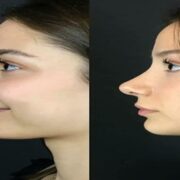
Uneven concrete surfaces can be a real eyesore and a safety hazard. Whether it’s your driveway, patio, or sidewalk, dealing with uneven concrete can be a daunting task. However, with the right tools, techniques, and a little bit of know-how, transforming uneven concrete into a smooth, level surface is entirely achievable. In this comprehensive guide, we’ll walk you through the step-by-step process of concrete leveling in St. Louis and how it can tackle the common uneven concrete problems.
Understanding the Problem:
Before diving into the transformation process, it’s essential to understand why concrete surfaces become uneven in the first place. Unevenness can be caused by various factors, including settling, shifting soil, freeze-thaw cycles, or simply poor initial installation. Identifying the root cause will help determine the appropriate solution and prevent future issues.
Assessing the Damage:
The first step in transforming uneven concrete is to assess the extent of the damage. Walk around the affected area and look for cracks, heaves, or depressions. Use a tape measure or ruler to measure the depth of any unevenness. Based on the damage concrete leveling experts in St. Louis can fix the damage or look for alternate solutions. This information will guide your repair strategy and help you determine the materials and tools you’ll need.
Gathering Materials and Tools:
Transforming uneven concrete requires specific materials and tools. Here’s a list of what you’ll need:
- Concrete resurfacer or self-leveling compound
- Concrete patching compound
- Concrete bonding agent
- Pressure washer
- Concrete grinder or scarifier
- Trowels
- Broom
- Safety gear (gloves, goggles, mask)
Preparing the Surface:
Before applying any repair materials, it’s crucial to prepare the concrete surface properly. Start by thoroughly cleaning the area with a pressure washer to remove dirt, debris, and any loose concrete particles. Allow the surface to dry completely before proceeding.
Next, address any cracks or holes in the concrete by filling them with a concrete patching compound. Follow the manufacturer’s instructions for mixing and application. For larger cracks or deep depressions, use a concrete grinder or scarifier to level the surface.
Applying the Repair Materials:
Once the surface is clean and prepped, it’s time to apply the repair materials. If you’re dealing with minor unevenness, a concrete resurfacer or self-leveling compound may be sufficient. Mix the resurfacer according to the manufacturer’s instructions and pour it onto the uneven areas. Use a trowel to spread the material evenly, working it into any low spots or depressions. Allow the resurfacer to cure according to the manufacturer’s recommendations.
For more significant unevenness or areas with deep depressions, you may need to use a concrete bonding agent before applying the repair material. Apply the bonding agent to the prepared surface according to the manufacturer’s instructions, then pour the self-leveling compound or concrete resurfacer over the area. Use a trowel to smooth out the material and ensure it’s level.
Finishing Touches:
After allowing the repair material to cure, it’s important to give your newly transformed concrete surface the attention it deserves. Begin by using a broom to sweep away any loose debris or particles that may have accumulated during the repair process. Next, take a close look at the surface to identify and address any remaining imperfections. In some cases, sanding down rough spots or applying a second coat of resurfacer may be necessary to achieve a smooth, flawless finish. Taking the time to put these finishing touches on your concrete surface will help ensure its longevity and enhance its overall appearance.
Maintenance and Prevention:
To prolong the life of your newly transformed concrete surface, it’s essential to practice proper maintenance and take steps to prevent future unevenness. Regularly clean the surface to remove dirt and debris, and address any cracks or holes as soon as they appear. Consider applying a concrete sealer to protect the surface from water damage and freeze-thaw cycles.
Concrete leveling in St. Louis is a way to transform uneven concrete surfaces into smooth, level areas is a manageable home improvement project with the right tools and techniques. By following the steps outlined in this guide and taking the time to properly prepare and repair the surface, you can achieve professional-looking results that will enhance the appearance and safety of your outdoor spaces. With a little effort and attention to detail, you’ll have a beautifully transformed concrete surface that you can enjoy for years to come.








